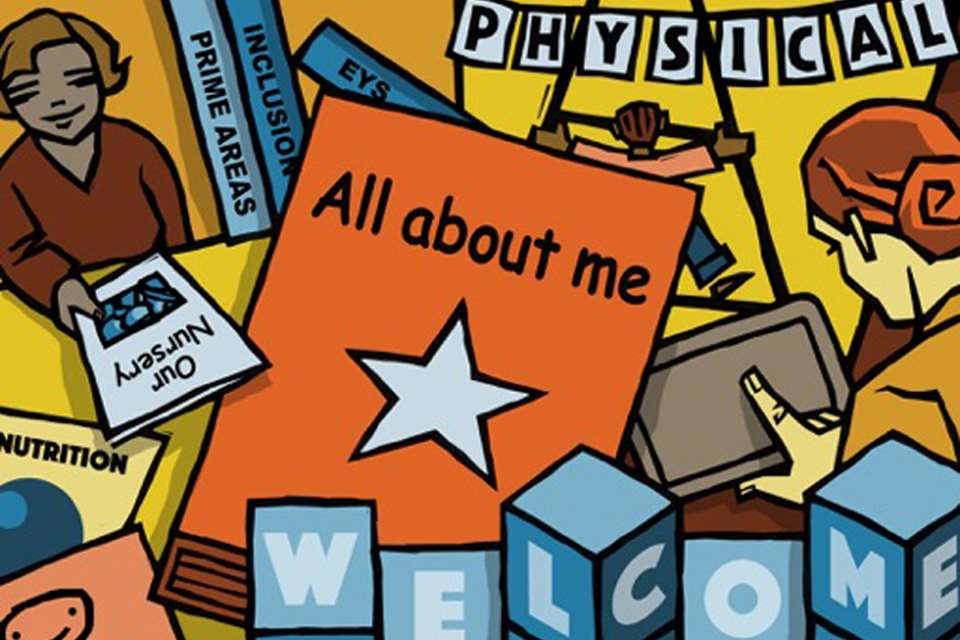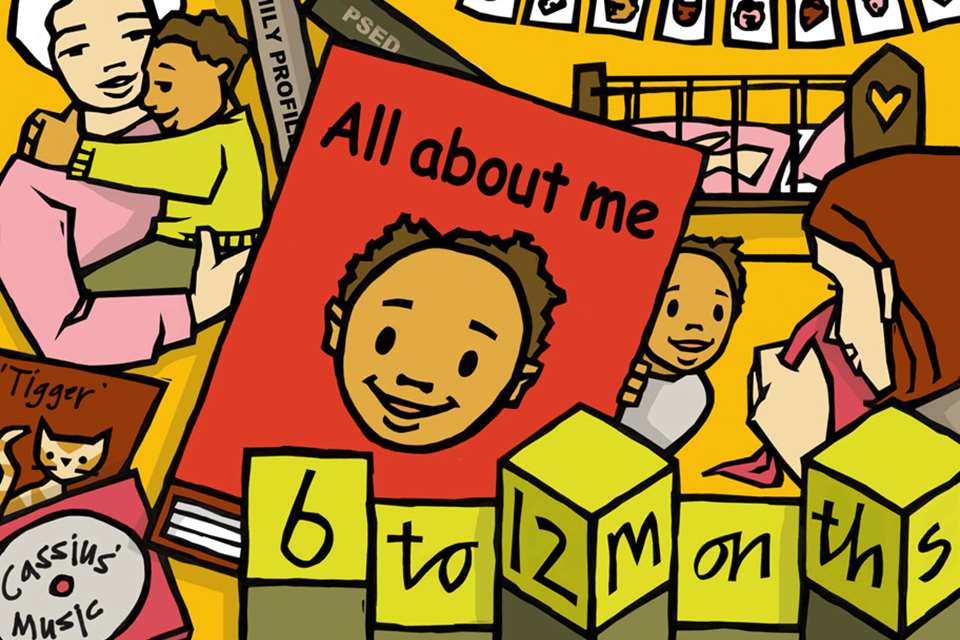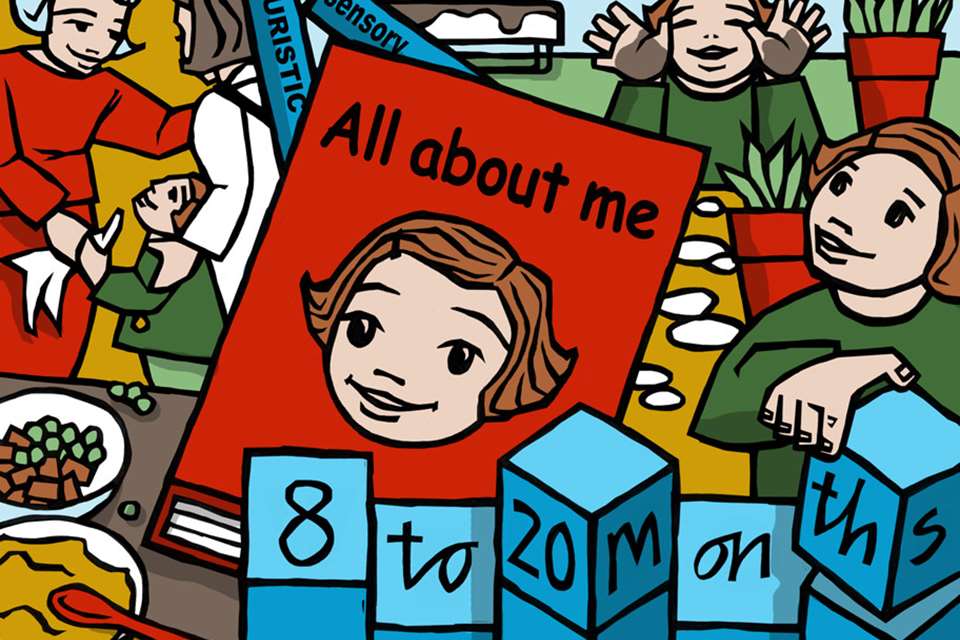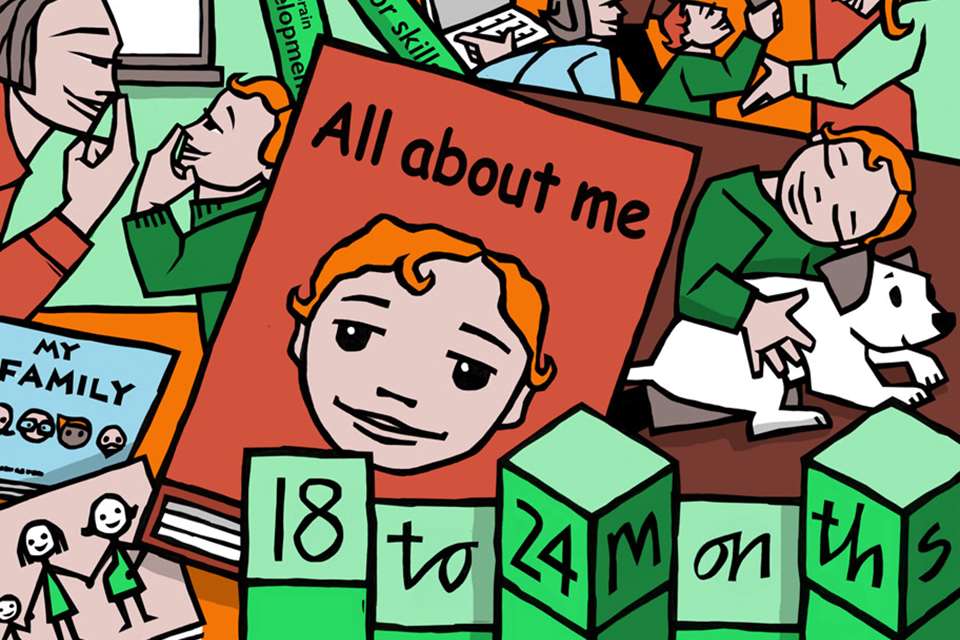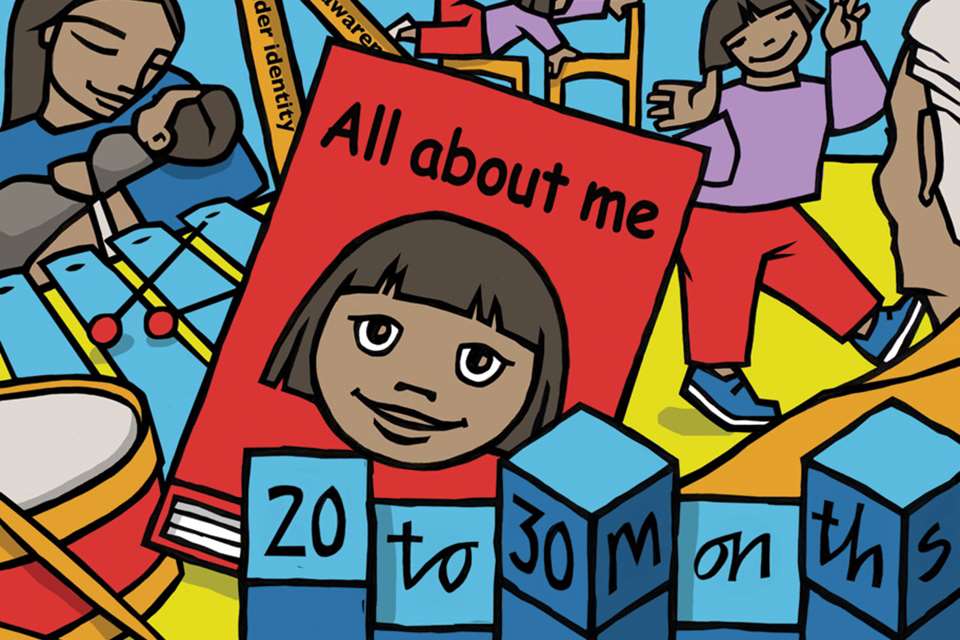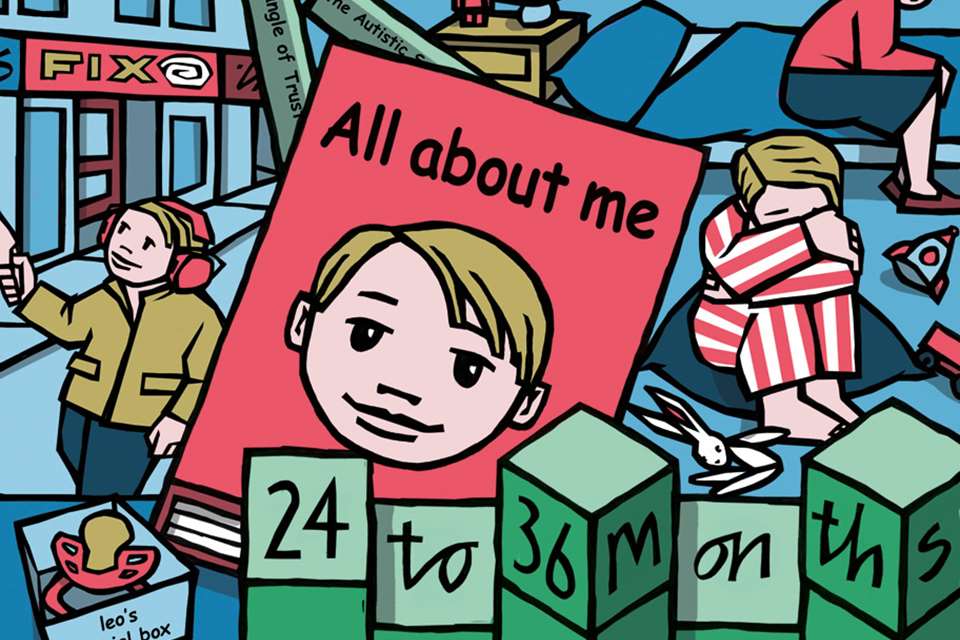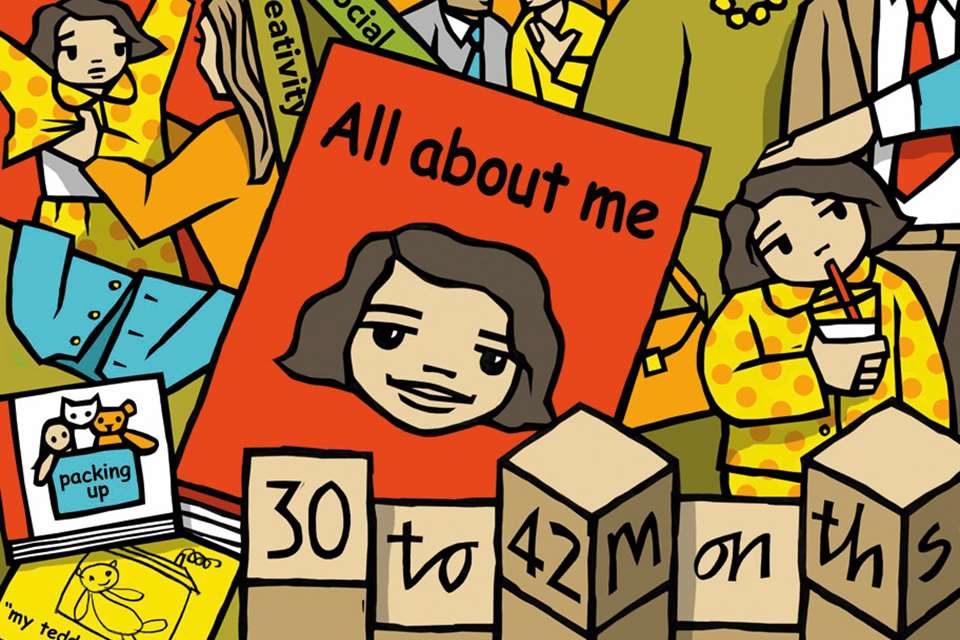STARTING POINTS: PART 8 - Piotr 42 months old
Ruth Thomson
Monday, August 8, 2016
Meeting the emotional and learning needs of the unique child

By Julia Manning-Morton, an independent consultant, trainer and author (www.key-times.co.uk/profiles/). She specialises in practice and provision that meets the needs of children under three and is an expert on the personal, social and emotional well-being of children and practitioners.
Her publications include Two-Year-Olds In Early Years Settings: Journeys Of Discovery (2015) and Exploring Well-being in the Early Years (2014)
Piotr is three and a half years (42 months) old and has recently started attending the nursery class of his local primary school in Nottingham. As well as being new to the nursery, Piotr is new to the UK. He arrived here from Poland with his mother Iwona and sister Emilja (six years old) six months ago. His father Andrzej had been living and working in the UK for the previous two years and was then in a position for his family to join him.
The family now lives in a terraced house near the nursery. Piotr and his family speak Polish at home; Andrzej also speaks almost fluent English, while Iwona is attending classes to develop her basic English further. Both are using some English words and phrases with Piotr and Emilja to support their introduction to school and nursery.
THE UNIQUE CHILD: COMMUNICATION WITHIN SUPPORTIVE RELATIONSHIPS
When he first started at the nursery, Piotr seemed overwhelmed by the strangeness of the environment, the routine and the other children. He would spend a lot of time carefully watching what the adults and children were doing, but gradually he began to move tentatively to the edge of play activities and to make half-smiles at other children. These brave steps towards social communication were helped by some key practices within the nursery:
The senior teacher, Jean, who leads the nursery, allocated Zuzana as Piotr’s
key person. Zuzana is Czech and can understand and use some Polish as well as being able to speak to Iwona in Russian, which they both learned at school.
Jean and Zuzana carried out a home visit together and were able to learn about Piotr’s favourite play activities (trains and construction) from Iwona. They also gathered information about Iwona and Andrzej’s cultural values and family traditions, such as how they celebrate birthdays.
At key group time, Zuzana uses music and movement games that don’t require the children to have English to join in. When they sing songs and read stories, Zuzana includes those with a lot of repetition and uses props, actions and gestures to support the language learning of all the children in her group. Iwona tells her that she now hears Piotr beginning to sing bits of these songs when he is at home.
Jean arranged with Emilja’s class teacher for Emilja to play in the nursery garden with Piotr and his friends during break time. She also planned some play activities especially for Piotr and two other boys who share his play interests; one who speaks only English (Tom) and one who speaks Polish and English (Alex).
At first, Iwona was a little confused by the nursery encouraging Piotr to speak Polish with Alex, but when Zuzana told her how noticeably Piotr’s confidence in participating and in attempting to use English had increased after these sessions, she was reassured.
Zuzana observed Alex inviting Piotr to build a train together using blocks, as they had the previous day with Jean. She heard Piotr echoing and responding to each of Alex’s phrases; ‘me play here’, ‘more blocks’, ‘me get blocks’ and then also asserting himself, ‘no, my train’. He was also able to introduce another idea and humour to avoid an argument over the train; ‘look, train crash’, as he sent a small engine spinning off the block ‘track’ making Alex laugh.
36-50 months: key aspects of communication and language development
Learning language is not just about the nuts and bolts of vocabulary and grammar, it is firstly social and cultural communication. So, when observing children’s communication and language, it is most important to note how the child makes language work for them in their interactions as well as to identify the sounds, signs and words they know and the way they structure their language.
Usually at about this age children:
- use language as a means of widening contacts by sharing feelings, experiences and thoughts
- ask why, when and how questions
- talk in a way that reflects their socio-cultural context, using the style and inflection of the language(s), dialects and accents familiar to them
- join in with repeated refrains and phrases in rhymes and stories
- use vocabulary that is focused on objects and people that
- are of particular importance to them
The Unique Child:
language development
All of the above Jean has been able to observe in Piotr for herself, but Iwona and Zuzana tell her that in Polish, Piotr can also:
- use past, present and future tenses (for example, play, playing, will play, played).
- retell a simple past event in the correct order (for example, he told Iwona that he was chasing Tom and then fell over and grazed his knee)
- use words such as ‘and’ and ‘because’ to link his ideas
This shows how practitioners who do not speak a child’s home language might underestimate the child’s language, cognitive and social development, especially if any hesitancy in verbal expression is mistaken for a lack of understanding. Therefore, it is very important that these practitioners have the help of bilingual colleagues, parents and other children.
SOCIAL RELATIONSHIPS WITH OTHER CHILDREN
The approach that the nursery took in Piotr’s introduction to the setting seems to have matched his friendly disposition and has also had a positive influence on his social development. Since the focused activities with Jean, Piotr, Tom and Alex have become good friends and play together almost exclusively; they are now often called ‘the three musketeers’!
This is appropriate, because they share a love of chasing and play fighting, especially with ‘swords’ that they make with sticks, card and tape or construction sets. Alex introduced this play after he had seen some sword fighting on the television, and the other two boys quickly imitated the gestures, body stance and the key phrase ‘on guard’.
Zuzana has observed how Piotr has developed some useful strategies for joining in with others. He always watches what a child or group are doing and then will imitate their actions, often looking them in the eye and smiling. Then he may either do something that makes the other child or children laugh or may introduce another idea or item into the play.
Zuzana also taught him some key phrases such as ‘Can I have a turn?’ and ‘Shall we play…?’ He is so competent at this that his social interactions are nearly always welcomed by the other children.
36-50 months: key aspects of social development
As children become more able to play imaginatively together, their ability to understand others and learn from each other grows and with that, their social skills and cognitive understanding develop further – social, creative play is a prime mechanism for children’s learning.
Usually at about this age children:
- are slightly more outgoing towards unfamiliar people
- and more confident in new social situations
- are becoming more skilled in making friends and demonstrate friendly behaviour by initiating conversations
- and play
- gradually learn to negotiate and to give and take, sharing resources more and accepting the needs of others
- may show a sense of humour
- can play in a group, extending and elaborating play ideas and keeping play going by responding to what others are saying or doing
Theory: Lev Vygotsky
(1896-1934)
Lev Vygotsky’s perspective on children’s development is called a social-constructivist theory; he emphasised that learning takes place within a socio-cultural context. So, for Vygotsky, cognitive development occurs through interaction with more knowledgeable adults and peers.
Vygotsky also said that adults and other children pass on their culture through interaction and the use of cultural tools. Culture includes all the knowledge, objects and skills that are used in a society. Language is a key cultural tool that transmits knowledge, skills and values and Vygotsky said that it plays a major part in children’s cognitive development because language enables children to access information and to understand other people.
Vygotsky also believed that through play children can reach their highest levels of learning. He suggested that imaginative play frees children from the here-and-now and allows them to become a ‘head taller than they really are’, that is, really feel what it’s like to ‘be’ someone or something else.
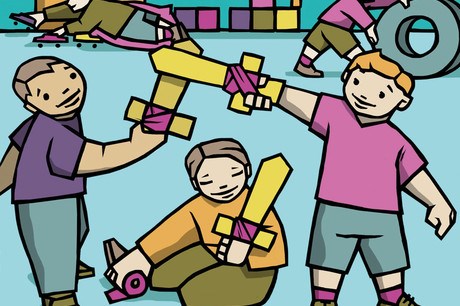
PLAYING AND EXPLORING, CREATING AND THINKING
Piotr’s play at being a musketeer is an example of ‘being a head taller’. This play also illustrates how he is learning from his peers and, when he plays at mending a car like his Dad does, learning from adults too. And he is learning not only about cars but also about his family’s cultural values in relation to being male. Jean observed him hauling a tyre along behind a truck and when Rochelle went to help, he said ‘No, I’m Dad’.
Piotr’s growing ability to imagine and pretend is extending his understanding of symbolic representation – that is, how we use one thing to stand for another. This includes his recognition that we use written letters and numbers to represent ideas and objects. For example, he can recognise and identify all the major petrol station brand signs and used paint to make marks to write the word ‘Esso’ for the sign to the garage they made in the garden.
His ‘garage’ play also showed his ability to think about a problem and use previous experience to problem solve. When he reached the slope in the garden, his truck pulling the tyre got stuck. Twice he rolled backwards, then he stopped and yelled at Tom and Alex ‘push me’, remembering that Zuzana had pushed him up the slope earlier.
Although Piotr loves to play with Alex and Tom, he also likes to spend time playing alone. Zuzana has noticed that in the afternoons he seems quieter and maybe a little sleepy. At these times he enjoys getting out the small-world trains, trucks and cars and lying on his tummy on a floor cushion, he will line them up in a ‘traffic jam’, talking to himself and apparently unaware of everything around him (occasionally even dropping off to sleep).
This trajectory and connection schema cluster is another interest that he shares with Tom and Alex. They like to spend time building long ‘motorways’ that stretch across the group room or from one wall in the garden to another. Sometimes they need help to work out how to solve the problem of the blocks or other materials not reaching their chosen destination and achieving ‘connection’.
Piotr expresses his schema cluster both dynamically (running between two points, for example) and configuratively (for example, gluing and stapling progressively smaller cartons together to make a tower).
Characteristic of Effective Learning:
Playing and Exploring
Children who are engaged in playing and exploring usually:
- select and use activities and resources independently or with help.
- show an interest in how toys or real objects with mechanical parts work
- realise tools can be used
- for a purpose
- use available resources
- to create props to support their play
- use various construction materials
- explore colour and the texture of materials and may enjoy music – by playing instruments, singing and dancing
- xplore and talk about their familiar world and things such as plants, animals and natural and found objects
36-50 months: key aspects of cognitive and creative/representational development
Usually at about this age children:
- further develop their symbolic behaviour, using personal images such as ‘pretend’ writing
- notice what adults and other children do and imitate it, adding their own ideas too.
- pretend, using imaginative role-play based on their own first-hand experiences and building stories around toys
- represent events in drawings and models and through movement
- show an interest in shape, numbers and letters in the environment
- sometimes give meaning to marks they make
- recognise familiar words and signs such as their own name and advertising logos
- can think back and forward much more easily than before
- engage in problem-solving
- are fascinated by cause and effect and are continually trying to explain what goes on in the world
PHYSICAL DEVELOPMENT: PLAYING AND MOVING
To build on Piotr’s interest in sword fighting, his key group watched some video footage of Olympic fencing then practised the different stances and movements they had seen. This resulted in a lot of falling over!
The muscle control required to balance and move as precisely as in fencing is still beyond the abilities of most young children, who need to move dynamically to develop such muscle control. But Zuzana noticed that as the ‘sword fighting’ play continued, Piotr seemed to be able to balance for longer before he toppled over.
36-50 months: key aspects of physical development
Usually at about this age children:
- display a sense of balance through jumping and landing on two feet, walking backwards and sideways, standing and walking on tiptoe, standing on one foot and walking along a line
- can bend at the waist to pick up objects from the floor
- can climb stairs with one foot on each step, and come down stairs with two feet per step at first. Later they can run upstairs and downstairs, one foot per step
Children’s increasing dexterity is shown through:
- building taller and more complex constructions
- controlling mark-making tools using thumb and first two fingers – a tripod grasp
- using scissors to cut
- catching and throwing
- drawing lines and circles using a range of gross motor movements and a preferred hand.
FURTHER READING
Meggitt, C, Bruce, T and Manning-Morton, J (2016) (6th Edition) Childcare and Education. London: Hodder Education
Smidt, S (2016) Multilingualism in the Early Years: Extending the limits of our world. London: Routledge
Whitehead, M (2010) (4th Edition) Language and Literacy in the Early Years 0-7. London: Sage
Sheridan, Mary (2010) Play in Early Childhood: From birth to six years, revised and updated by Justine Howard and Dawn Alderson. London: Routledge
Dowling, M (4th edition 2014) Young Children's Personal, Social and Emotional Development. London: Sage
Moylett, H (Ed) (2014) Characteristics Of Effective Early Learning: Helping young children become learners for life. Maidenhead: Open University Press
O'Connor, A and Daly, A (2016) Understanding Physical Development in the Early Years: Linking bodies and minds. London: Routledge
For our series by the team at the University of Liverpool and the ESRC International Centre for Language and Communicative Development (LuCiD), visit: www.nurseryworld.co.uk/communication-language
For information on Lev Vygotsky, visit: www.nurseryworld.co.uk/early-years-pioneers


